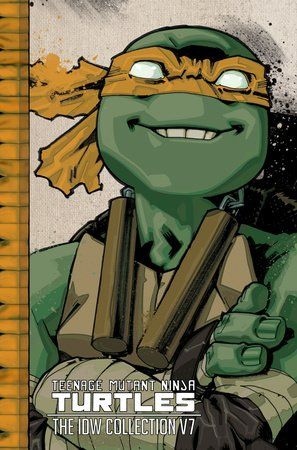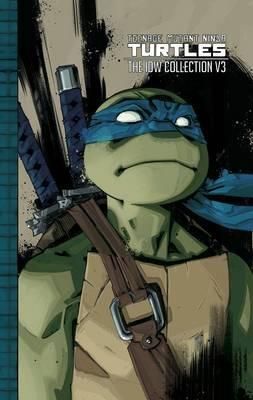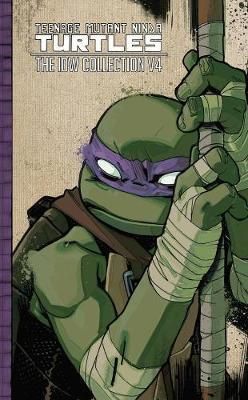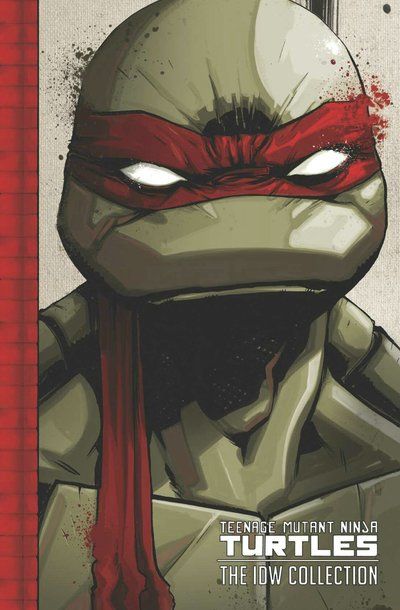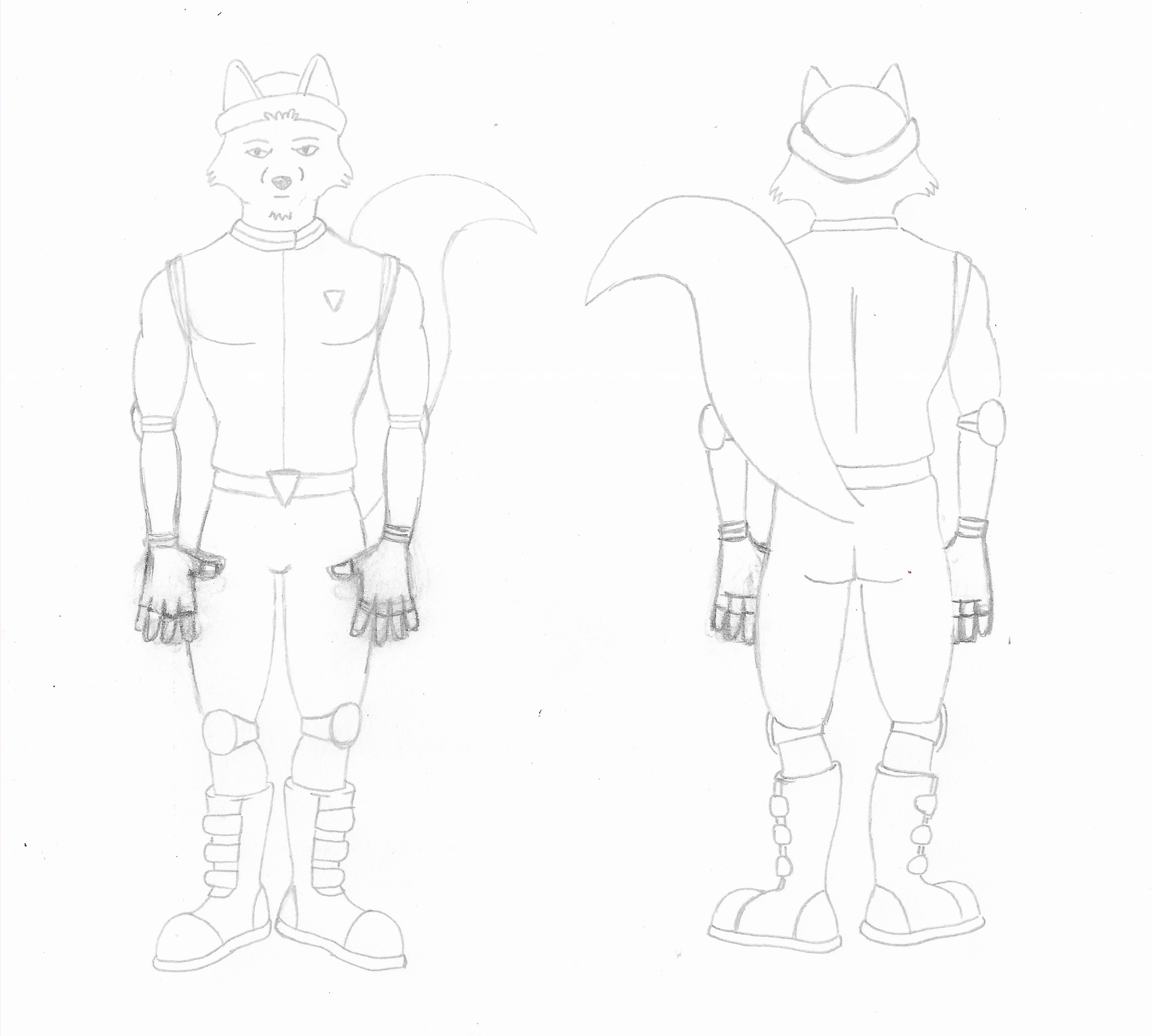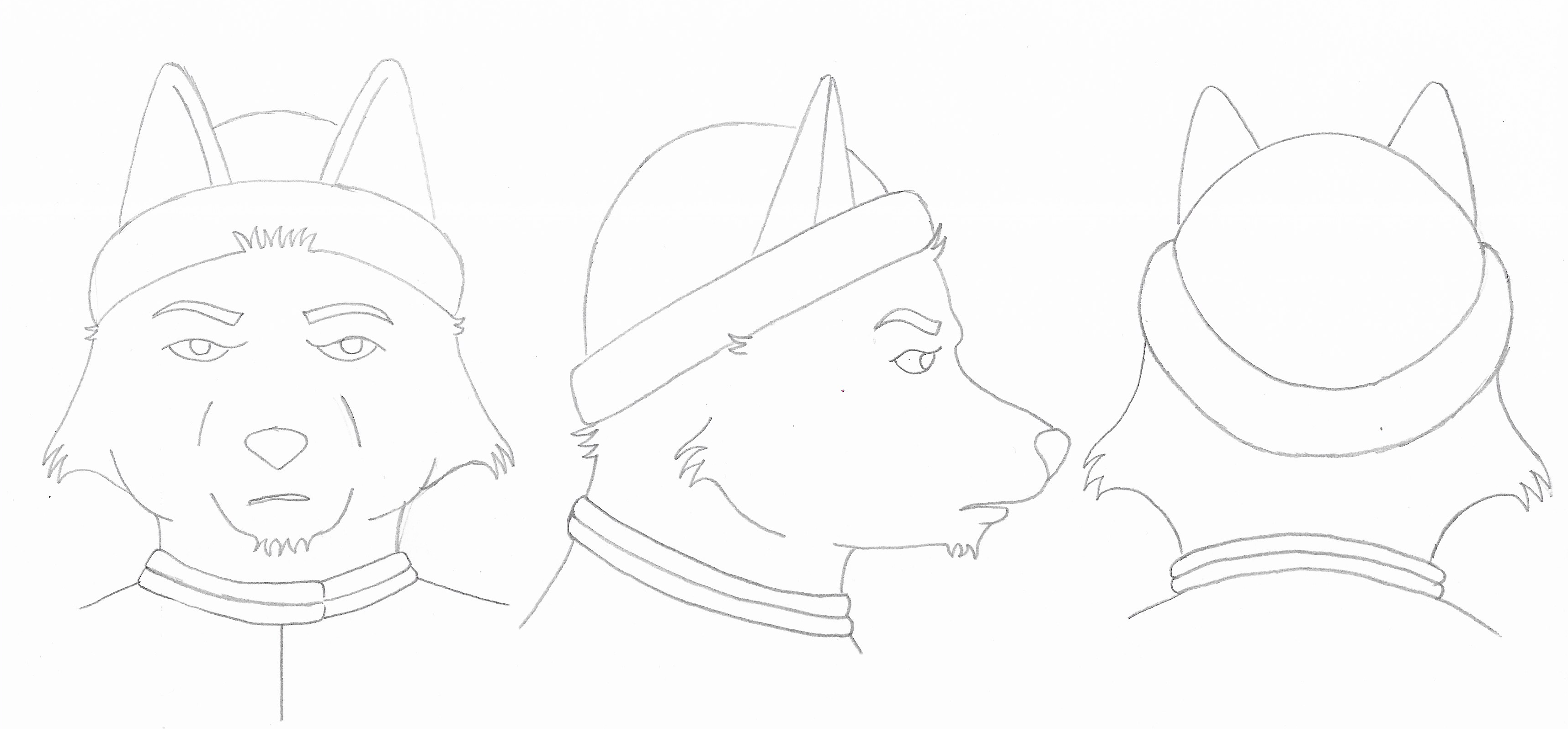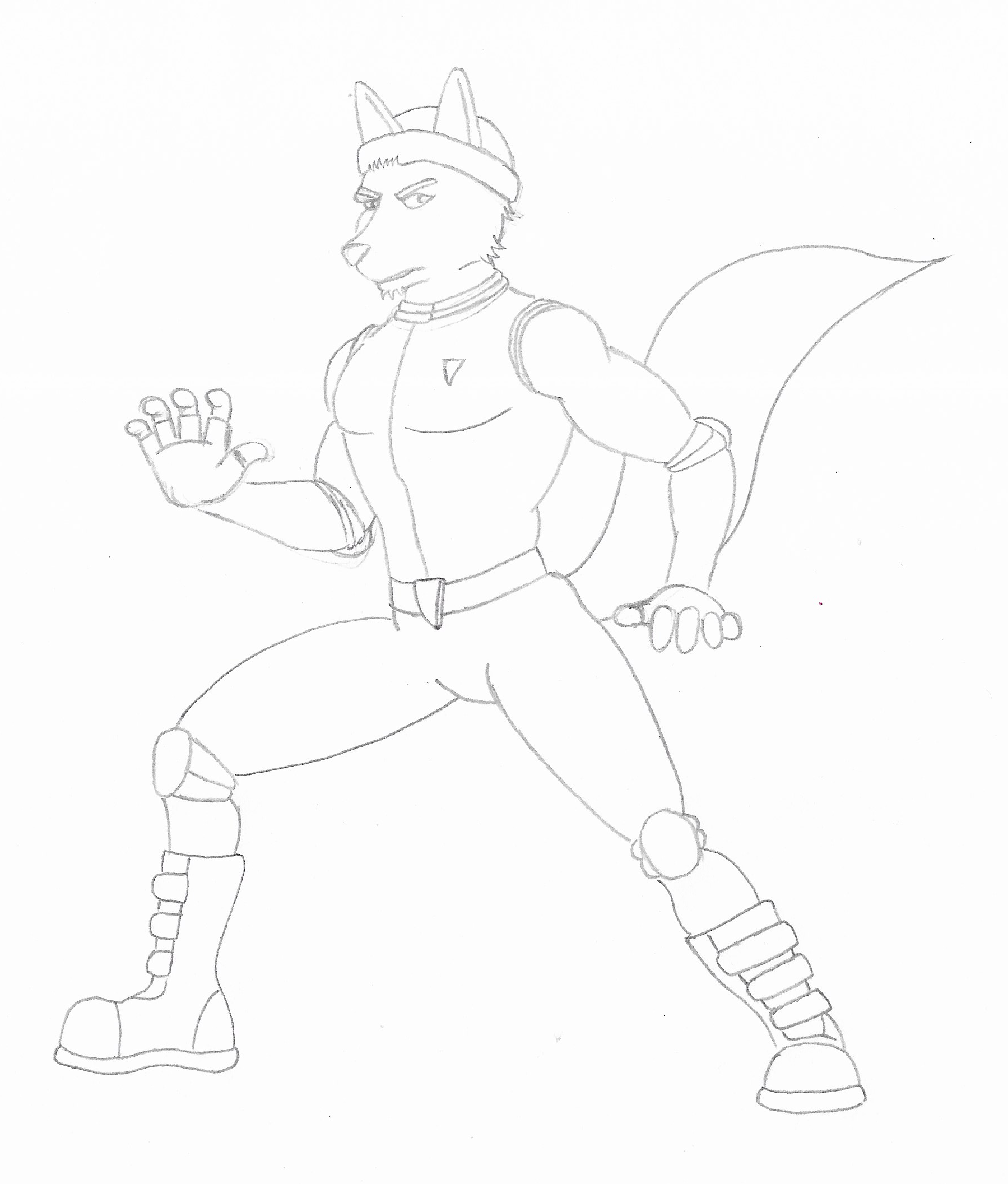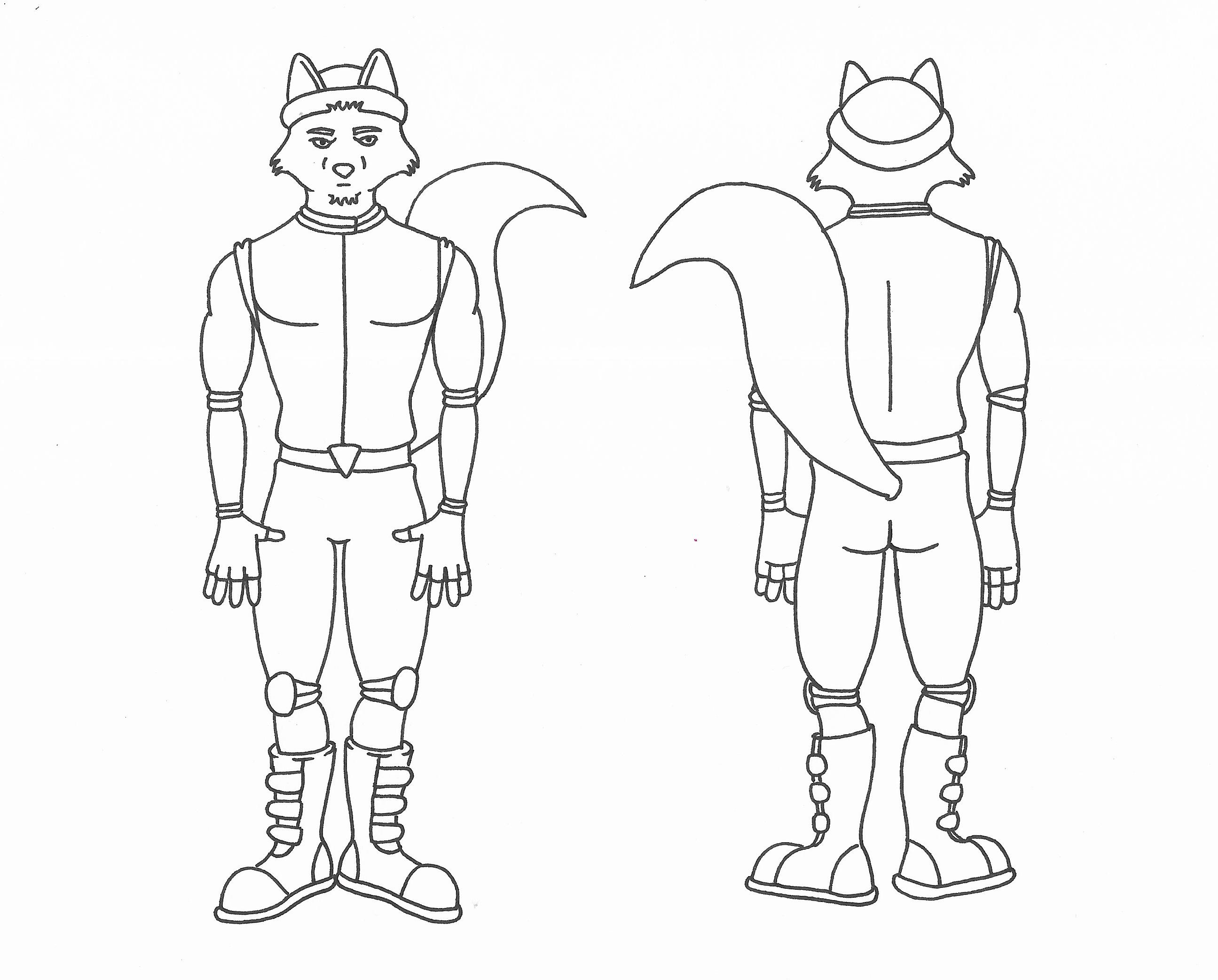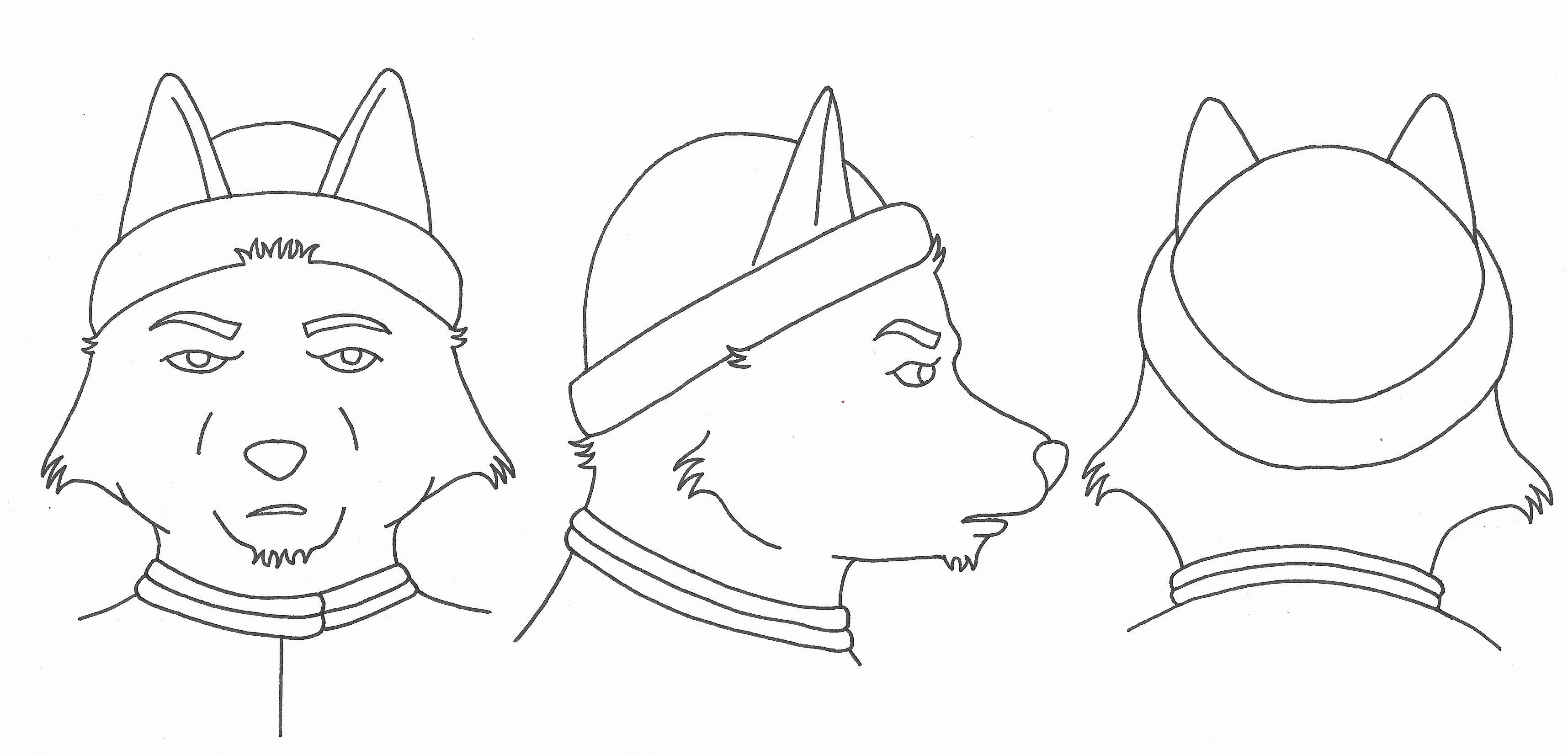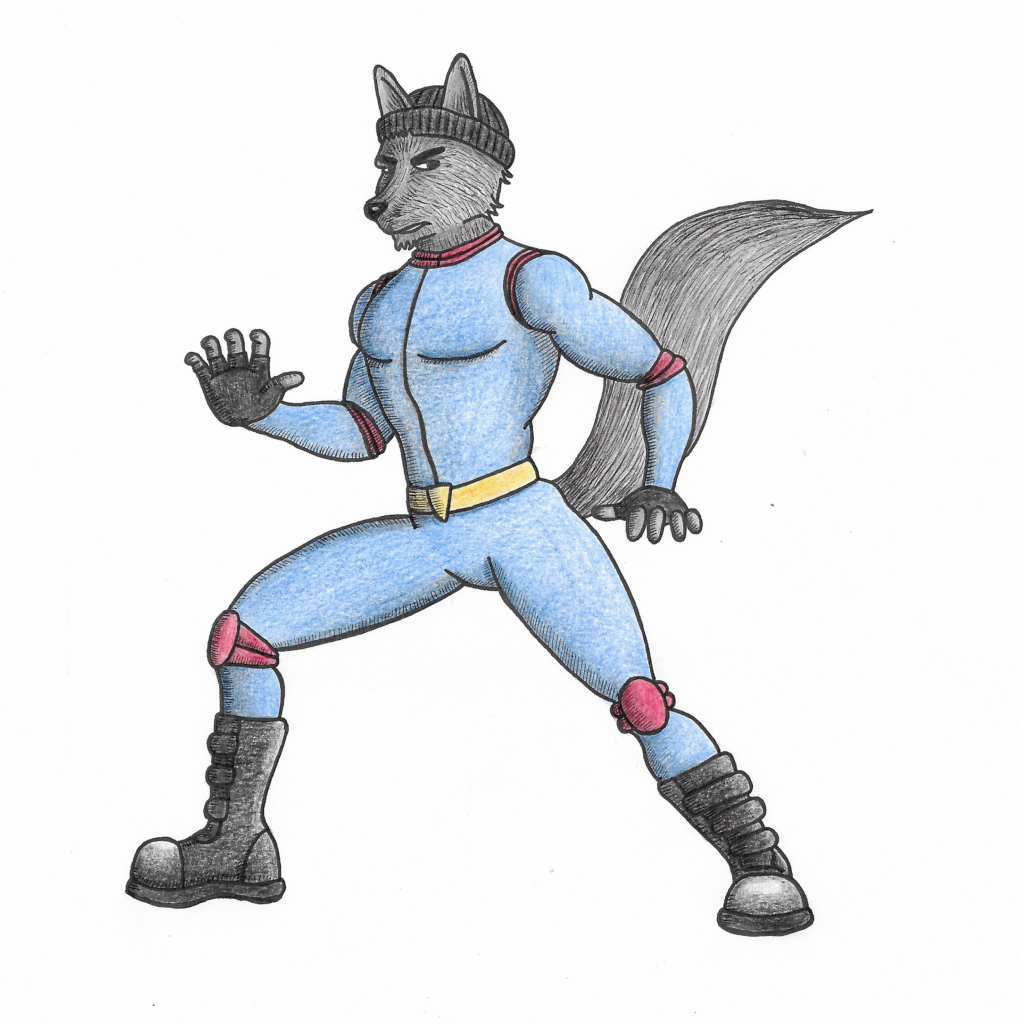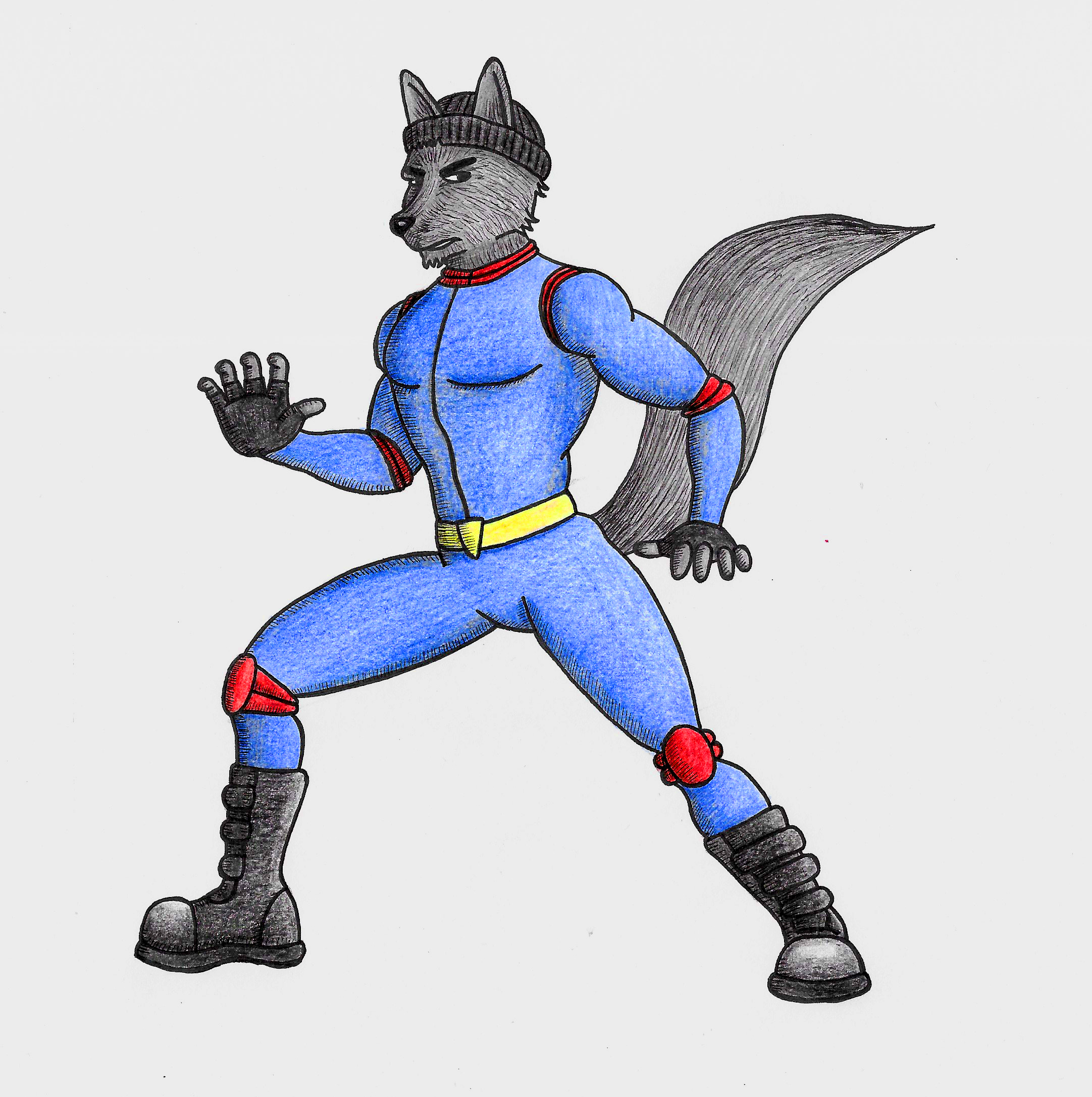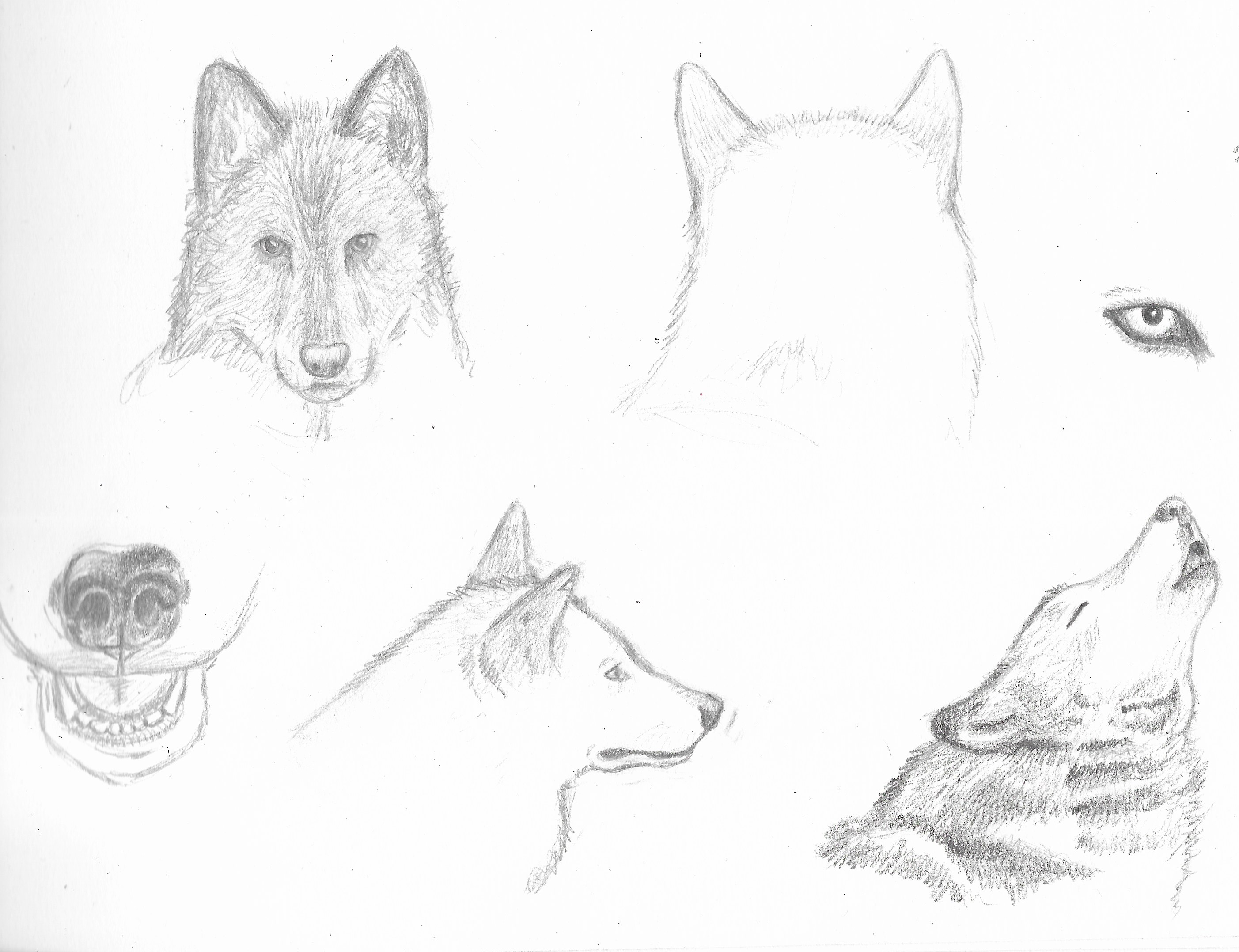Brief
For this exercise the brief is to create your own superhero. This is an opportunity for students who love superhero comics to really indulge their interest and go to town. However, it need not exclude any students from attempting to create their own character. Your superhero does not have to be serious, or realistic, grim and gritty. Your comic creation could be your own heroic creation, or someone in your family, someone you know, or a celebrity or politician transformed into a costumed character.
You need to produce a model sheet showing your character’s physical appearance, costume and powers. This means drawing them face-on and also their back, so showing their costume and style of drawing that appeals to you.
Also produce some sketches showing the world they inhabit, and maybe some supporting characters. The aim is to build a small portfolio comic book elements – perhaps a cover sketch for the first issue of the character’s own comic book, or a sample page showing the character embarking on an adventure.
Research
Although I was already familiar with many of the famous superhero characters, such as Superman, Batman and Wonder Woman, I have never really read any of the comics. I would say I was more aware of many of them due to the film/TV versions that have some out over the years. Out of these more well-known, obvious superhero characters, I always liked Superman and Spiderman the most, but after watching some of the more recent screen versions, I would also add Wonder Woman, Captain America, Captain Marvel and The Scarlet Witch.
I started this exercise by looking up all of the named characters in the brief (please see References). Out of the more eccentric examples, my favourite was Too Much Coffee Man. I thought it was quite effective in sending up the genre and relatable to the average person trying to do their best.
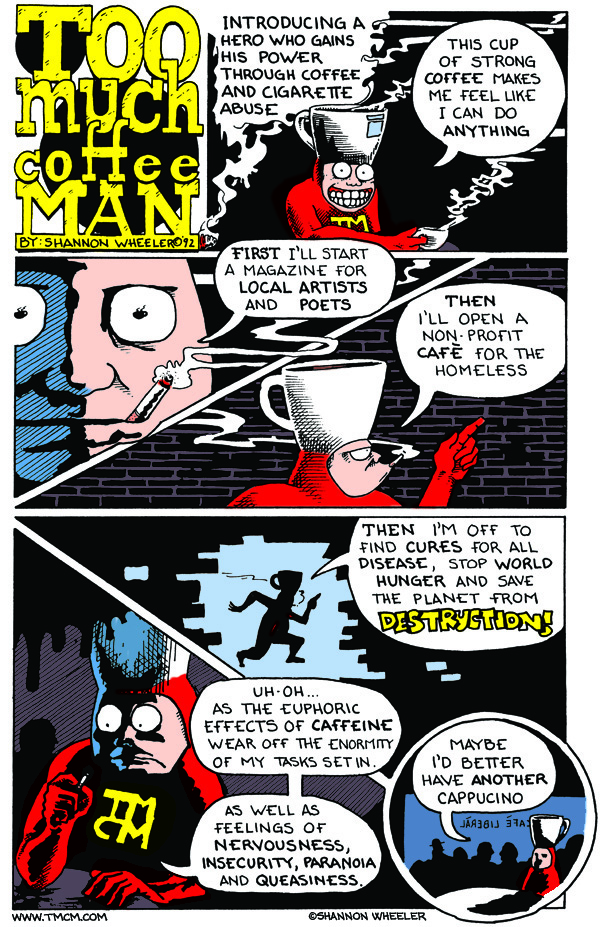
I also started thinking more broadly of superhero characters I remembered from my childhood, such as Bananaman, SuperTed and Mighty Mouse. The final example in the brief that appealed to me the most was Teenage Mutant Ninja Turtles. I was such a fan of them when I was younger and would spend hours trying to draw the protagonists, particularly Leonardo and Raphael. However, I never realised they were based on a comic book as I used to watch the cartoon series and live-action films.
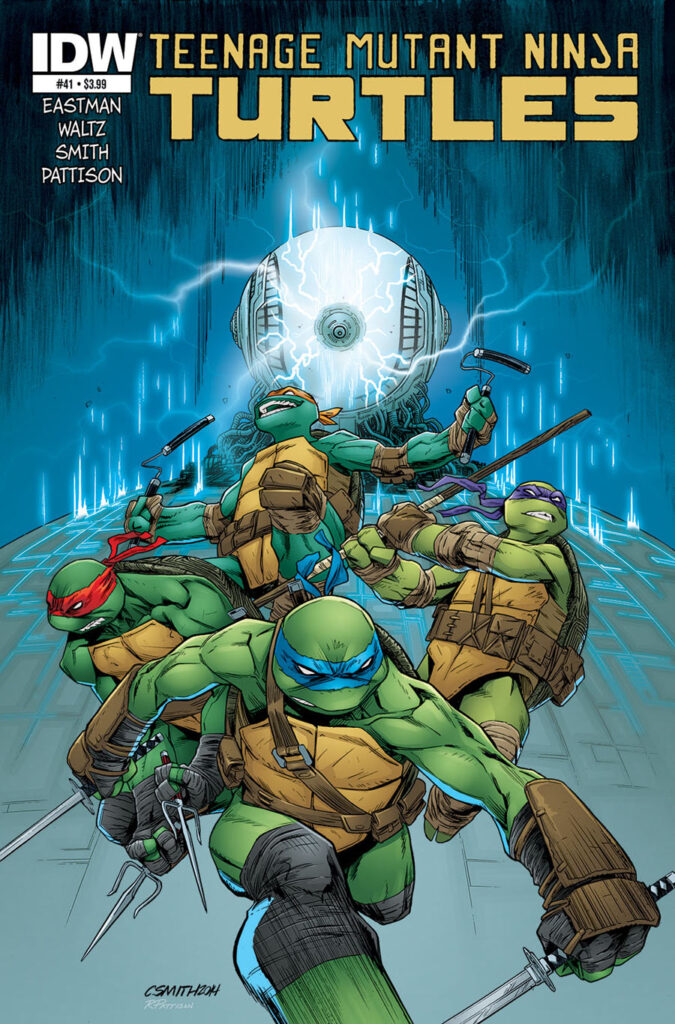
Next, I created a Pinterest board with examples of various superhero characters.
The final piece of research I did was to look at examples of character model sheets and I found a particularly inspiring reference page titled 100+ Character Model Sheets From Animation History. I thought it was fascinating to see the artists’ notes regarding how to build up the designs and certain characteristics. They make it look so easy!
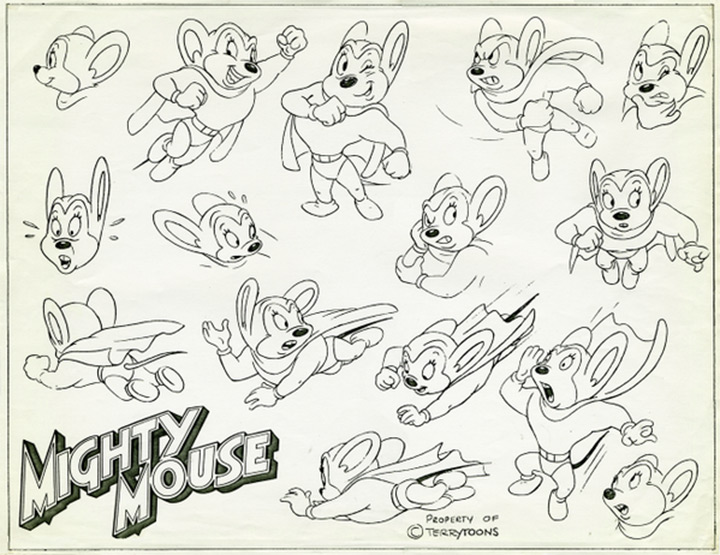
Ideas
Initially I had a few ideas for superhero characters including one with the ability to heal, which then developed into a superhero who could clean up the planet, e.g. oil spills using his/her special powers. However, these ideas started to become quite complicated in my head and I ended up confusing and diluting my initial ideas. I was not that convinced by these and decided to try something different.
I reminded myself it was not necessary for the hero to have superpowers, as in the examples of Batman and Black Widow, and instead rely on more human abilities, albeit extremely enhanced!
I have always liked anthropomorphic characters and, having been reminded of the Teenage Mutant Ninja Turtles, a seed of an idea began to develop in my mind. I came across the images below on Pinterest and I particularly liked the style of making them quite gritty and intense, by the use of shadows and a non-saturated colour palette. I also thought they were very effective in showing each character’s individual personality. The use of ink spatter reminded me of the Frank Miller artwork I had seen in a previous exercise. Unfortunately I could not find out the name of the specific artist who created these examples (update: my tutor kindly led me on the path to discover that the artist is Dan Duncan).
For some time I have had the idea of a hero anthropomorphic wolf character called Flow who lives in a dystopian world ruled by slug-like/alien(?) creatures. I decided to take this exercise as an opportunity to try and visualise my idea.
Sketches
I looked for some examples of wolf characters on Pinterest and found a small selection. I mostly found these quite intimidating as I knew I would not be able to draw to such a high standard, but thought they would be useful as reference for the shape of the face, etc.
My initial sketches were full of frustration!
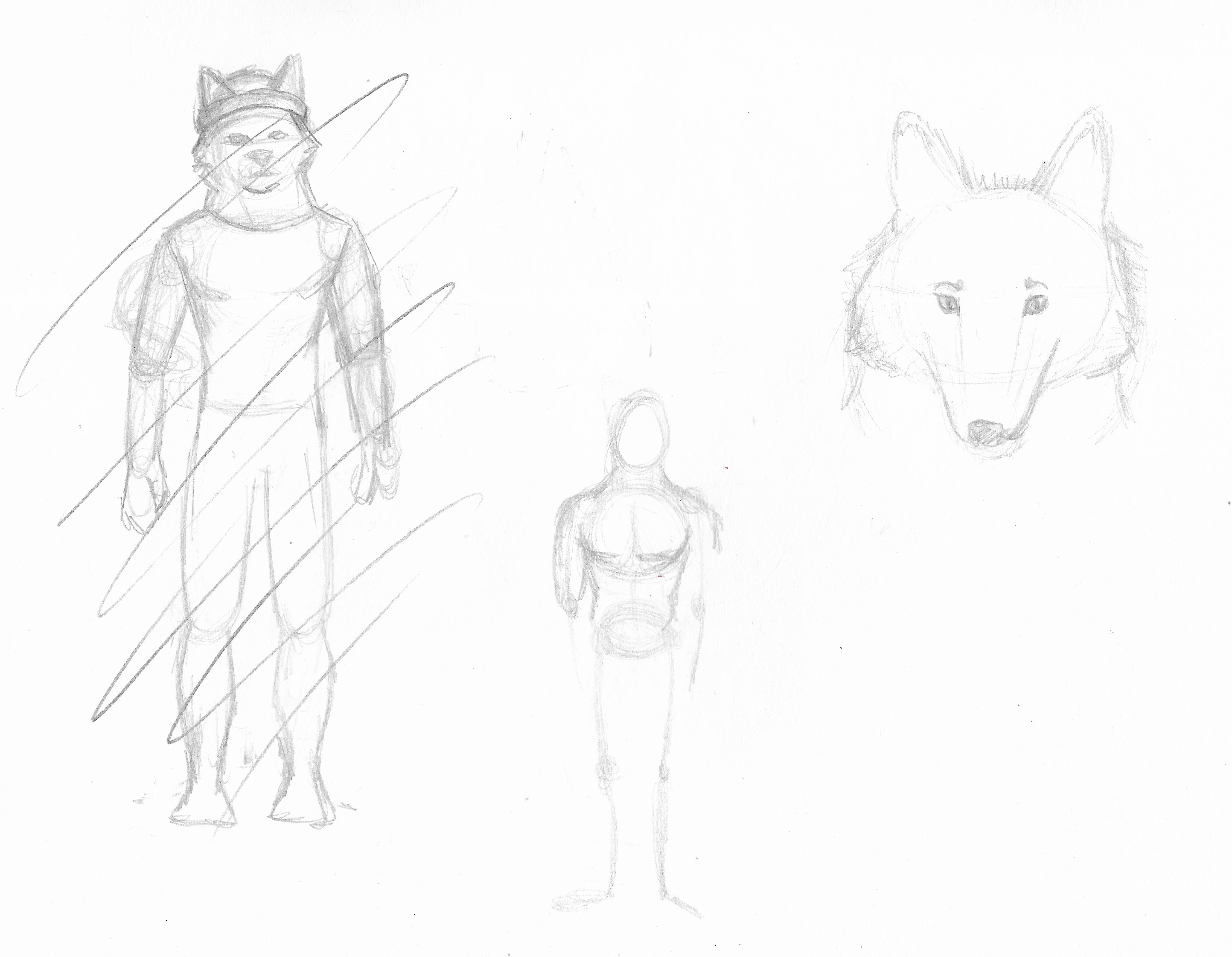
Refocused, I tried again with some improvement. Although I felt these were looking better than the previous, particularly the one on the right, I thought the proportions were not suitable for what I wanted.
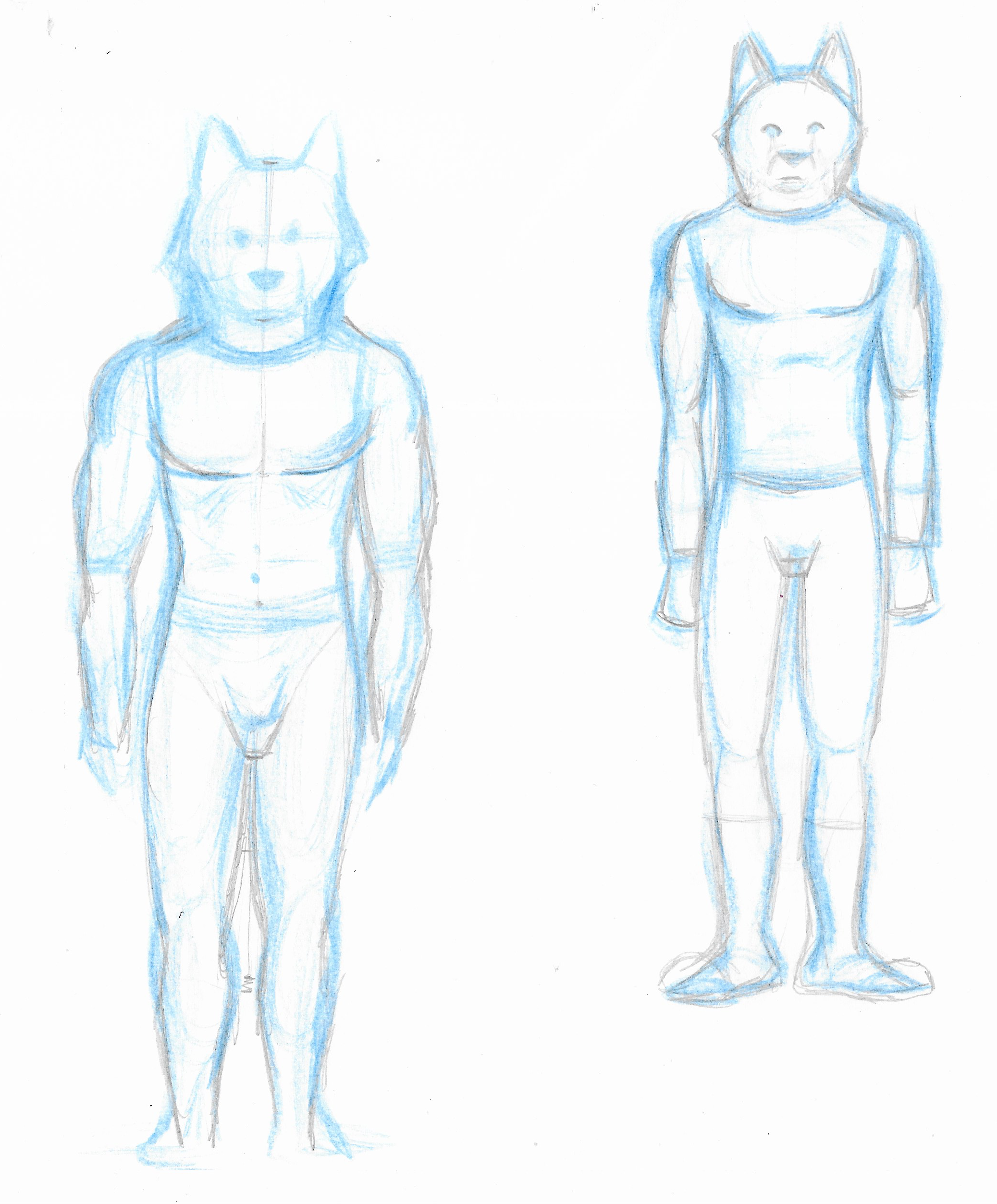
Refining the Character
After some time, I suddenly seemed to get a surge of creativity and managed to draw more or less what was in my imagination, gradually building up the drawing with plenty of rubbing out. I also found that by flipping the paper over on a light-box, it was much easier to spot any imbalances or rogue lines; I could draw the corrections on the reverse and then erase the incorrect marks on the front side before redrawing. This a technique I will certainly be utilising in future work!
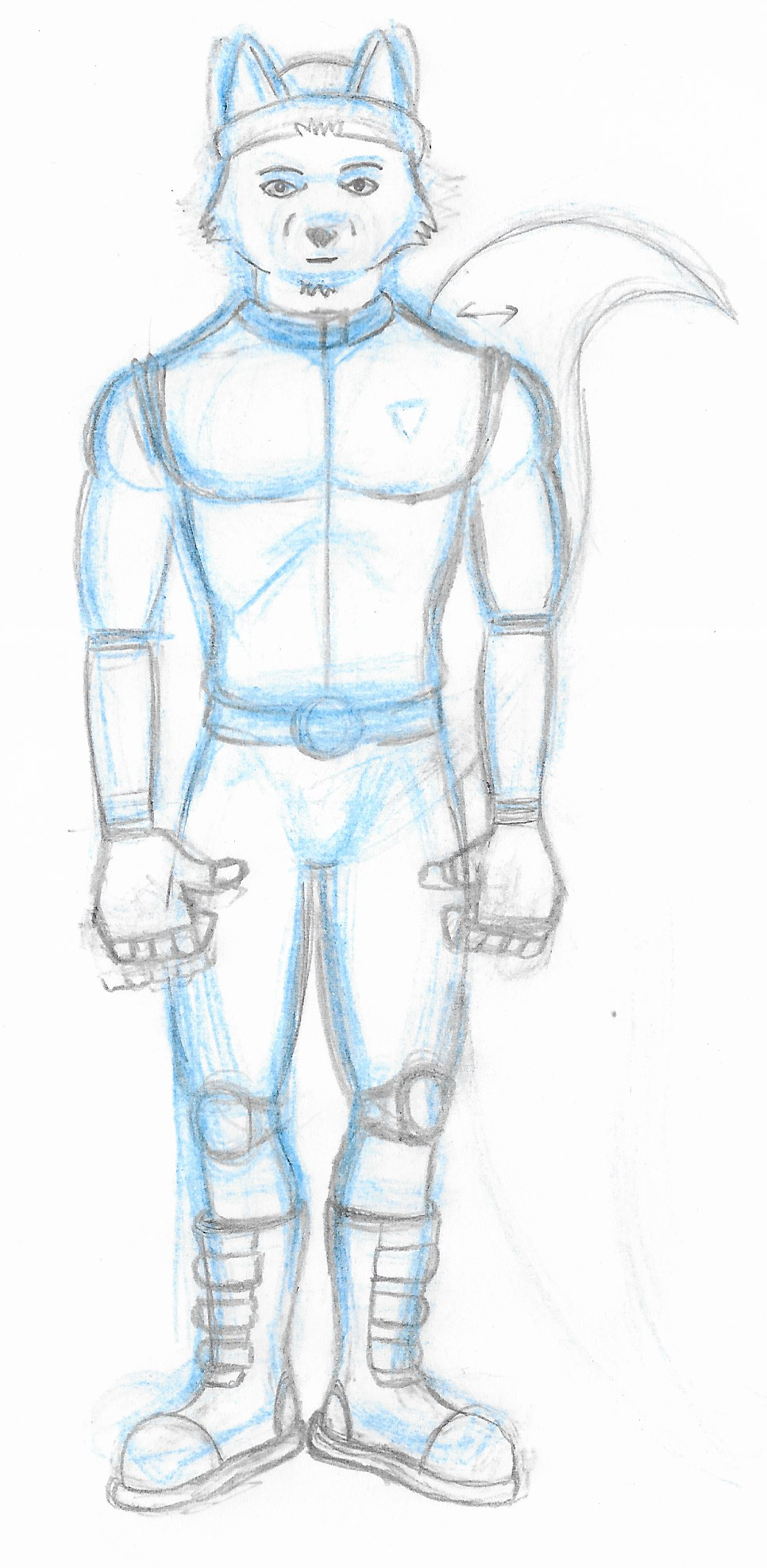
I repeated this process with the images below.
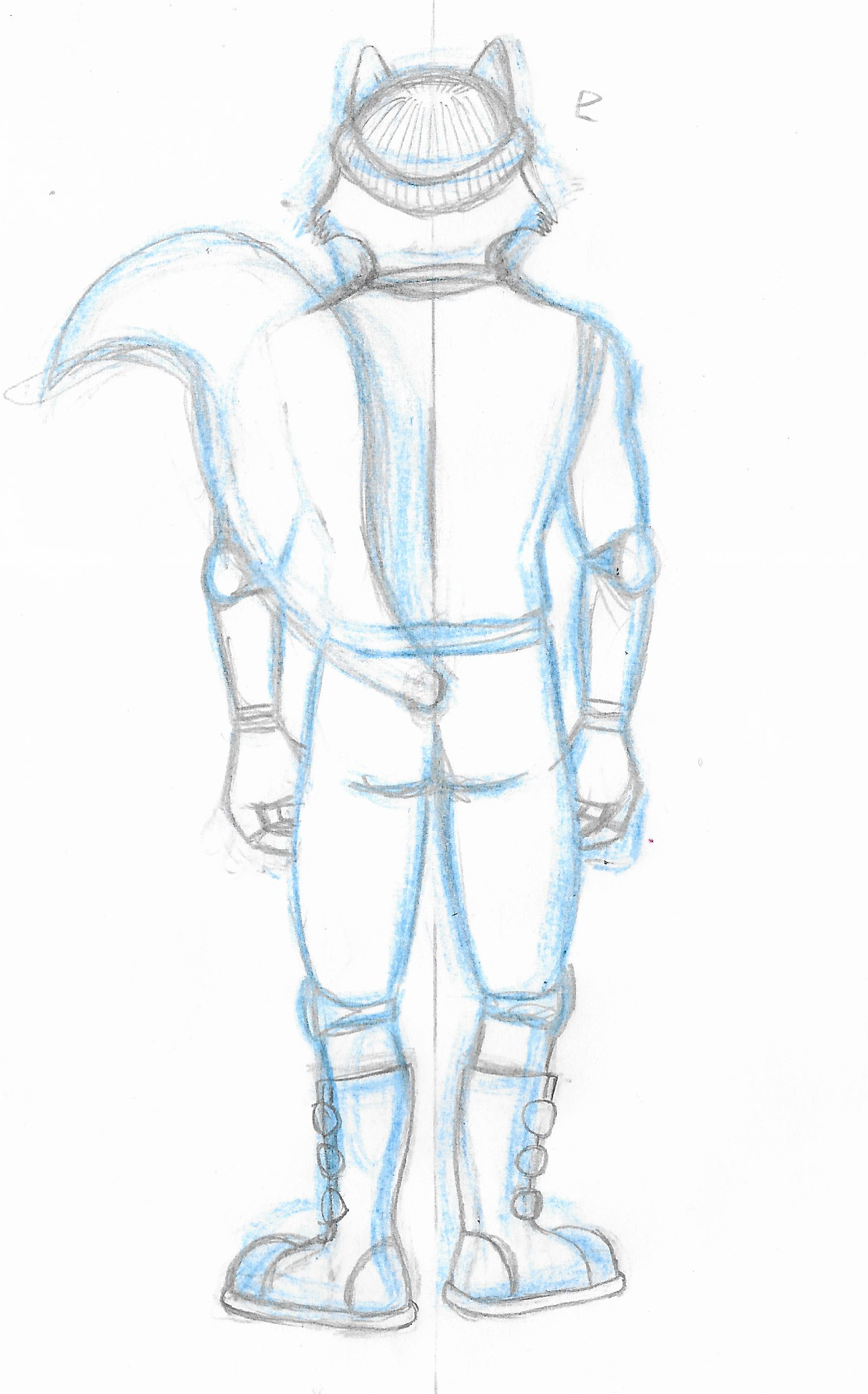
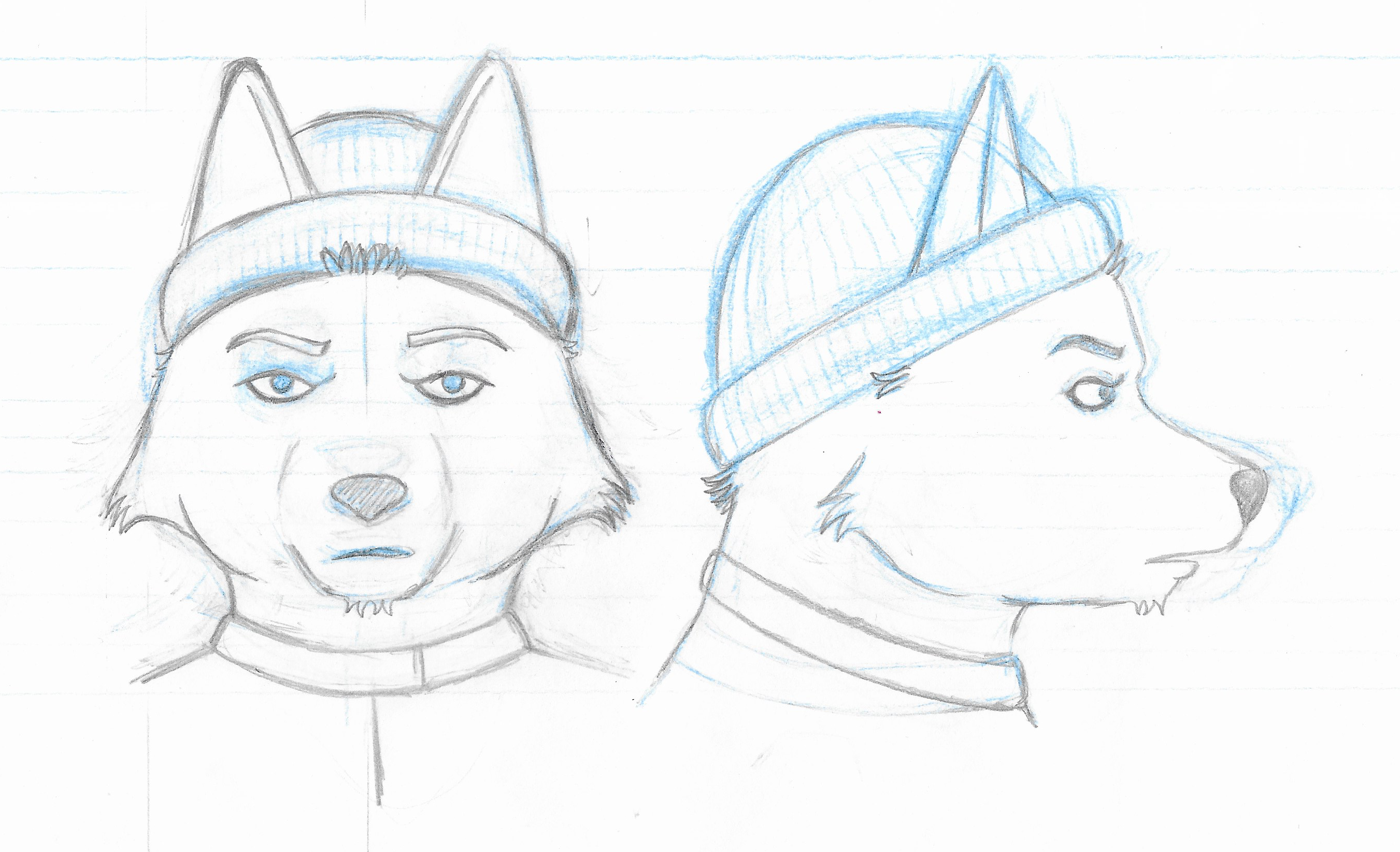
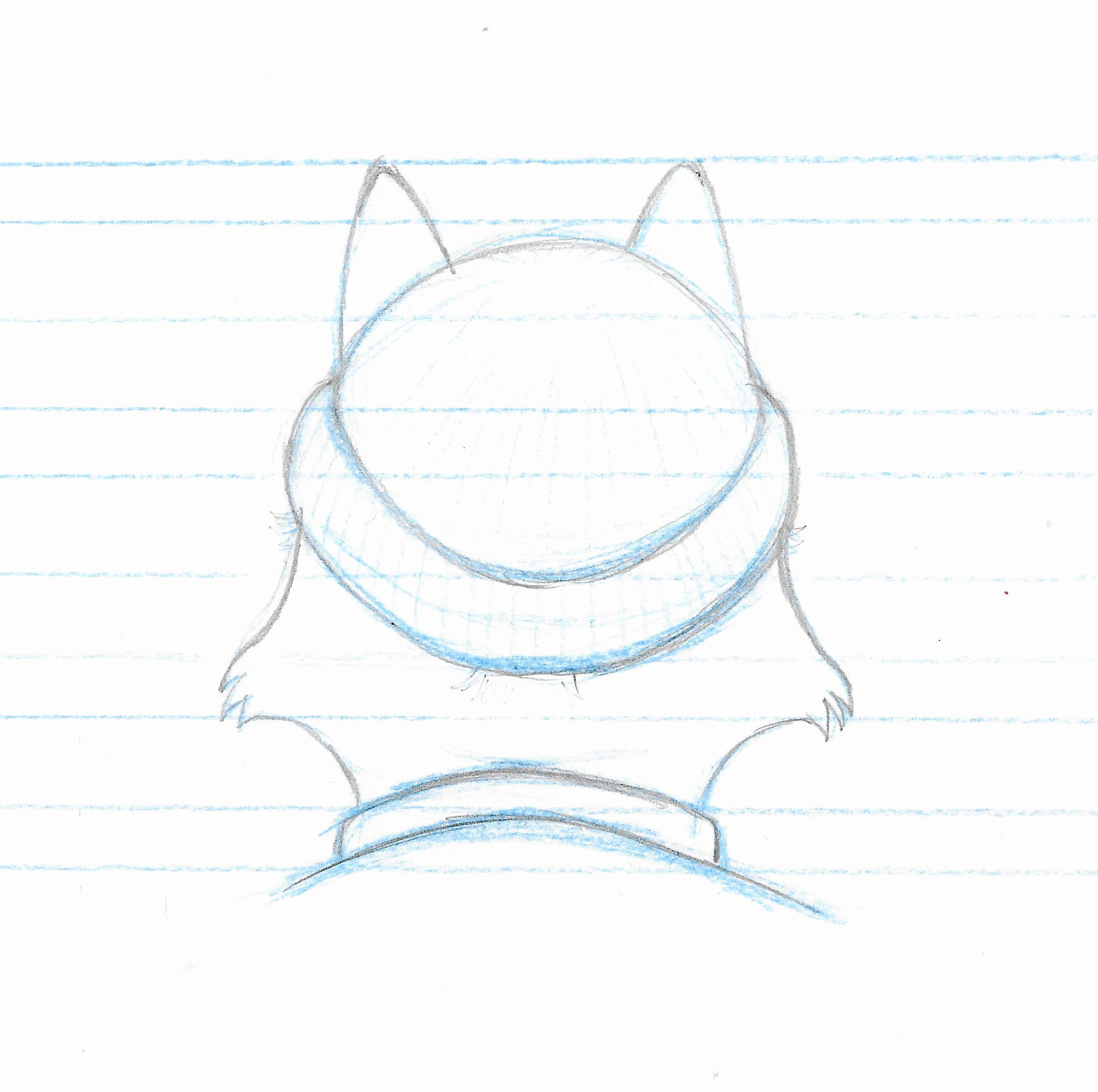
I then decided to try a more dynamic pose showing Flow in action.
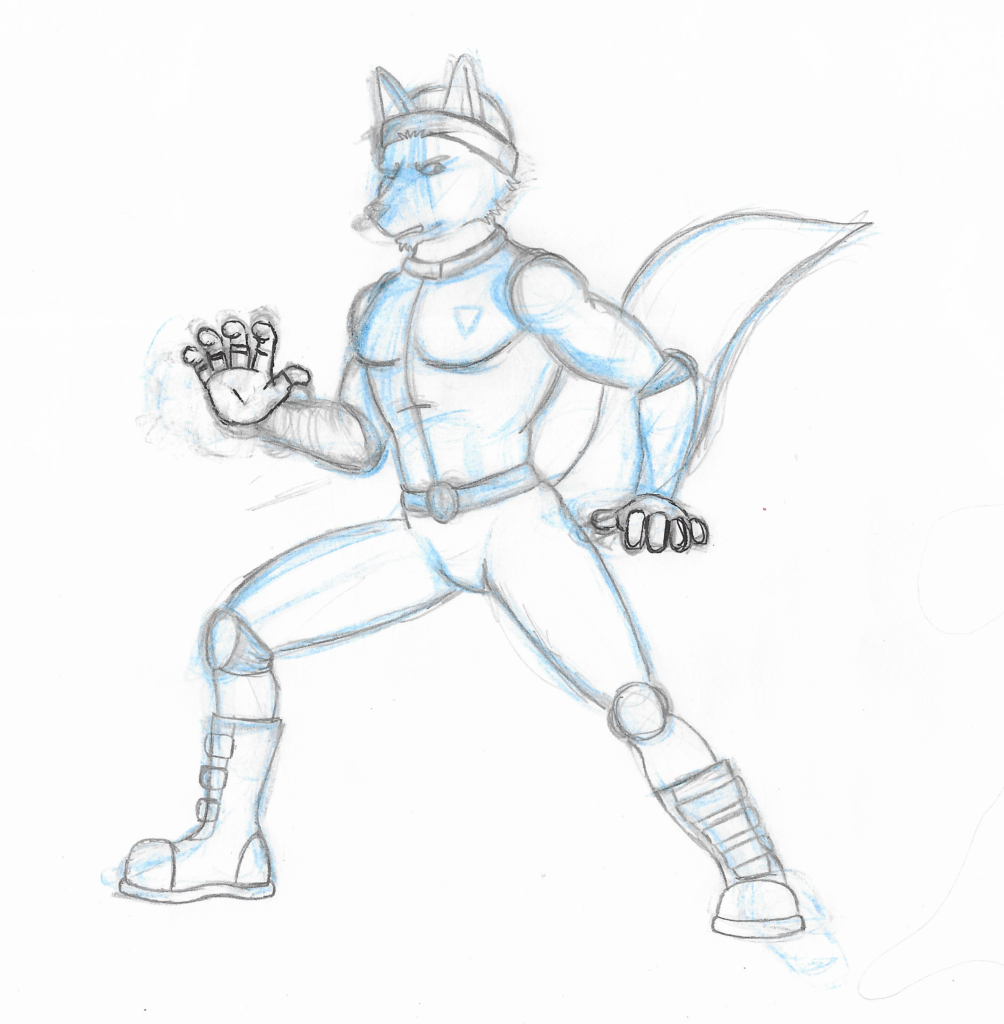
I was surprisingly quite pleased with what I had managed to achieve so far, but the hands caused me so much aggravation and continued to do so until the final stages! I particularly liked the stance pose as it showed more of Flow’s character.
I next moved onto making cleaner pencil versions. I nearly rubbed a hole in the paper trying to get the hands to look right. In the end I settled for the below, but I was not happy with them.
I was particularly satisfied with the side view of the head, but I found the back view quite challenging.
Ink Versions
I decided to use fineliners to outline the final drawings as there was quite a lot of small details and I felt a brush pen would not have coped well with these. I was happier with the hands in these versions.
I decided to make the stance drawing of Flow a colour one. I resolved to try using coloured pencils again after several previous disastrous results in previous exercises. I made sure I took my time and thought carefully about each mark I was making. I layered up the colour and then added some tone with a graphite pencil. I redrew the outline with a fineliner, adding some detail to the fur/tail and then decided to add some pen strokes to emphasis the shadows. I was not sure whether this final addition was successful or not. It was not intentional, but I realised I had used the stereotypical superhero colours (e.g. Superman style) of blue, red and yellow. Overall I was pleased with this final version and I was glad I had managed to use coloured pencils without ruining the drawing.
I did take the image into Photoshop and adjusted the saturation as the colours in the pencil version were not quite what I had in mind. However, on reflection of my initial inspiration of the TMNT cover illustrations, the use of non-saturated colour was one of the reasons I felt they worked so well, so perhaps I would rather go with the version above. I really just wanted to make the image stronger.
Other Sketches
As with the previous exercises in this section, I could not understand how they could be completed in a day as suggested in the section’s introduction! I spent so much time on creating my character I was not able to draw many other sketches of the ‘world’ and additional characters as asked for in the brief, even though I did have some ideas in mind.
Final Thoughts
I found the research for this exercise really interesting and inspiring, particularly when reminiscing about the characters I was familiar with from my childhood. It made me think about superheroes in a more open-minded way, rather than instantly thinking of well-known ‘stereotypical examples’, I was made aware of other forms being a ‘superhero’ could take.
Although I found the initial stages of designing my character frustrating and challenging, once I had something to work on, I settled into the exercise. I really pushed myself to try to make the proportions and overall design look ‘right’, making many, many corrections and decisions as I progressed.
I still find the finality of drawing with analogue tools stressful! Even during the write-up of this exercise I have been noticing ‘errors’ in the final drawings and I find it really hard not to be able to correct them.
Overall, I was really pleased that I managed to create a character that reflected what I had in my mind and that I did it all by hand, which I felt is gradually helping me improve my drawing abilities (which hopefully will eventually be reflected in any digital work I create). Evidently my skills are a long, long way from the TMNT reference images at the beginning of the exercise, but everyone has to start somewhere.
Reflections After Tutor Feedback
My tutor noted my frustrations with the initial drawings I made for the wolf character and suggested that visual research drawings may have been beneficial in these developmental stages. For some reason I have often found myself resisting this, even though I am fully aware that it would improve my work. I think the hesitation is due to my lack of self belief that I will be able to create work to a high enough standard, so even if I make an attempt I go into it with doubts and then give up I frustration.
Since revisiting this exercise, and without the added pressure of deadlines, I decided to attempt drawing a wolf’s head from several viewpoints and I was actually really pleased with the results. I was also quite impressed that I managed to keep the drawings roughly the same size.
Seeing these made it quite clear that, if I had done this (and more, including looking at the structure of a wolf’s skull and full body studies) at the beginning of the exercise, it would have most likely led to a more satisfactory character.
This follow-up work also highlighted the need for me to practice drawing textures, such as fur. My tutor commented on whether I had considered integrating traditionally generated textures/surface to layer onto the digital versions of my work. This is not something I had previously thought of doing, even though I have seen it in other artist’s work, but it is certainly an area I should experiment with as I move forward on the course, particularly as I have begun working more in analogue (and enjoying it) during this unit.
References
Auty, D. (2017). 15 Awesome Superheroes Who Don’t Have Super Powers. [online] GameSpot. Available at: https://www.gamespot.com/gallery/15-awesome-superheroes-who-dont-have-super-powers/2900-1621/#16 [Accessed 6 December 2021].
Boswell, D. (2021). Reid Fleming, World’s Toughest Milkman. [online] Deep Sea Comics. Available at: http://reidfleming.com [Accessed 6 December 2021].
Comic Art Community, (2014). Teenage Mutant Ninja Turtles #41. [online] Available at http://comicartcommunity.com/gallery/details.php?image_id=55501&mode=search [Accessed 6 December 2021].
Concept Art Empire, (n.d.). 100+ Character Model Sheets From Animation History. [online] Available at: https://conceptartempire.com/character-model-sheets-gallery/ [Accessed 6 December 2021].
The Further Adventures Of The Strangest Man Alive, (n.d.) Cover Art. [online] Available at: https://flamingcarrot818313225.wordpress.com [Accessed 6 December 2021].
Wheeler, S. (n.d.). Too Much Coffee Man. [online] Shannon Wheeler. Available at: https://www.shannonleowheeler.com/tmcm/ [Accessed 6 December 2021].
Wikipedia, (n.d.). Bananaman. [online] Available at: https://en.wikipedia.org/wiki/Bananaman [Accessed 6 December 2021].
Wikipedia, (n.d.). Julius Knipl, Real Estate Photographer. [online] Available at: https://en.wikipedia.org/wiki/Julius_Knipl,_Real_Estate_Photographer [Accessed 6 December 2021].
Wikipedia, (n.d.). Mighty Mouse. [online] Available at: https://en.wikipedia.org/wiki/Mighty_Mouse [Accessed 6 December 2021].
Wikipedia, (n.d.). SuperTed. [online] Available at: https://en.wikipedia.org/wiki/SuperTed [Accessed 6 December 2021].
Wikipedia, (n.d.). Teenage Mutant Ninja Turtles (IDW Publishing). [online] Available at: https://en.wikipedia.org/wiki/Teenage_Mutant_Ninja_Turtles_(IDW_Publishing)#Characters [Accessed 6 December 2021].
